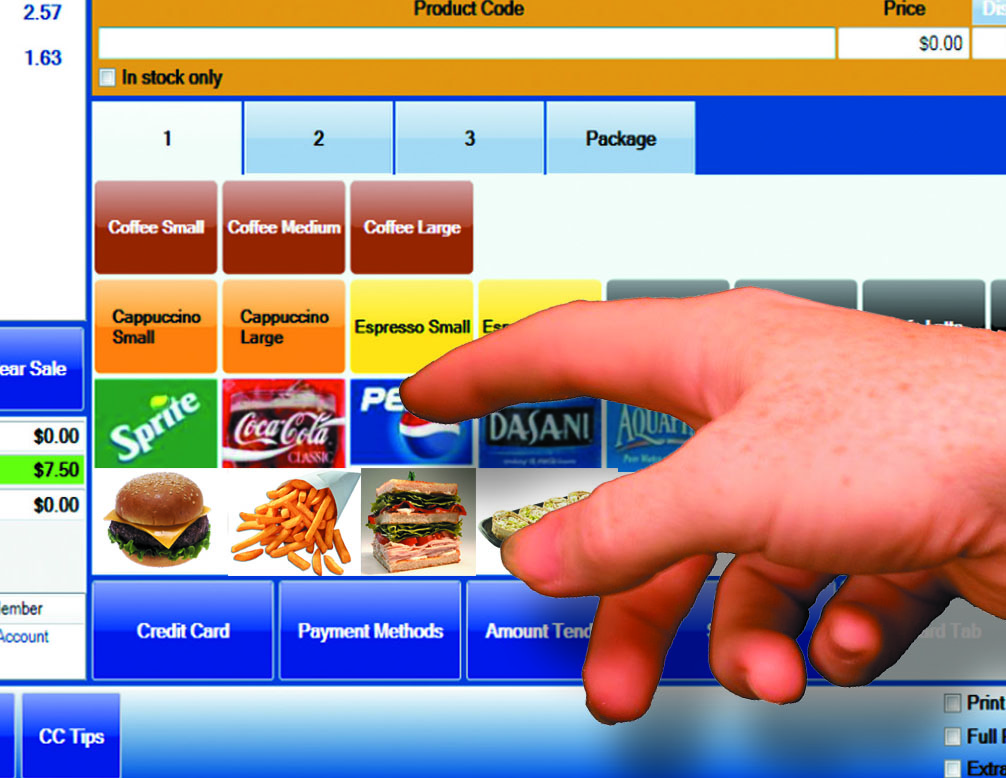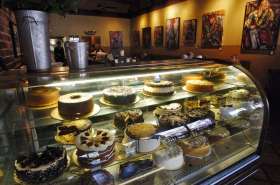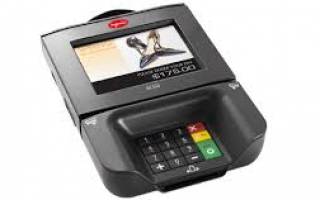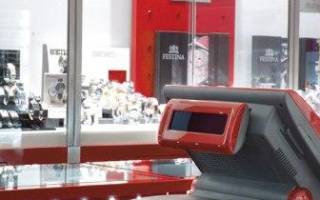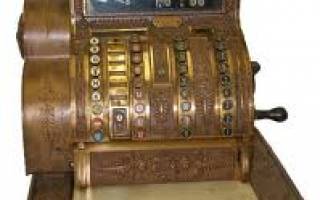POS Blog
Insight on POS Solution Selection for Independent Merchants

The 2013 Holiday Shopping Season is upon us. Malls will quickly be packed with shoppers seeking something special for that special someone. However, despite the amazing variety of products and services available, many shoppers find themselves coming up empty while seeking the perfect gift for certain people. Hence, the popularity of electronic gift cards continues to rise. According to NRF’s Gift Card Spending Survey conducted by Prosper Insights & Analytics, holiday shoppers will spend an average of $163.16 on gift cards, up 4.0 percent over the $156.86 they spent last year and the highest amount in the survey’s 11-year history. Total spending on gift cards will reach $29.8 billion. Similar studies also report that up to 20% of gift cards are never redeemed! So, how can merchants maximize this incredible sales opportunity?
Awareness - be sure to display your gift cards in an attractive way that is perfectly visible from several customer touch points within your store. Both printed and digital signage should also focus on your branded gift cards throughout the store. Also, your employees should be equipped with suggestive selling techniques to build gift card sales with existing customers.
Availability - be sure to offer gift cards on your e-commerce site in addition to your brick and mortar locations. The U.S. Census Bureau reports that 48.1% of total retail transactions in 2008 and 2009 were completed via e-commerce sites. Also, don't find yourself running out of physical cards during the Holidays. Stock up now if you have not already.
Creativity - during the season of giving, many merchants will make donations to various organizations. Instead of donating money or your products, try donating gift cards. This is a great way to acquire brand new customers that have never visited your business prior to being presented with a gift card. Although you donated the card, you may achieve an ROI by retaining this new customer for future sales growth.
January and February can be a real drag for merchants. Customers are returning items as often as they are making purchases. Successful Holiday Gift Card sales programs will combat some of those wintertime sales blues by driving traffic to your facility for gift card redemption.

In recent months, I've heard these words more frequently than
ever: "my facility is a bit of a hybrid...what do I do for POS?”
There are a few reasons for this increase in frequency of this question.
Just like in the financial markets, diversification works. Bakeries are supplementing their core business with retail merchandise that fits their persona. Specialty food retailers are offering tastings to enhance their core retail business. Cafe owners are adding and/or increasing retail portions of their business to increase sales per customer and build brand awareness. Coffee shops are obtaining liquor licenses to offer wine and craft beers to boost their evening sales.
So, the challenge remains and with good reason. I have always been a true believer in the "do one thing great" concept. I realize it's simple and improper grammar but eloquently so in both regards.
Fortunately, most POS developers agree and build applications that are extremely focused on specific markets. There are significant benefits in being vertically focused when developing POS. Most of them revolve around the aforementioned “do one thing great” concept. Point-of-sale software and hardware packages are very complex animals. Selling, delivering and supporting them become much easier when there is a strong focus on certain vertical markets.
However, with the climate changing in many verticals, a great deal of crossover exists today in terms of product mix being sold by merchants. As mentioned earlier, merchants are adding related products and services to complement their core businesses. In the examples above, retailers are adding services and hospitality items while QSR’s who traditionally have hospitality items are adding retail components to their business to increase revenues. Consequently, many of these merchants find themselves growing out of their POS systems since they are branching out of the traditional functionality needs of their standard market.
So, when you as a merchant start thinking outside of the box to gain that edge over the competition or to generate other revenue streams, what are you supposed to do about your POS? Your retail POS does not support hospitality functions. Your hospitality POS does not support the retail components you just added. Deploying two systems is simply not practical. You need a system that fills the gap. You need a hybrid.
Not to worry! These systems exist today. It is unlikely that you will find them with the large corporations who develop POS systems as they are slow to adapt to change for obvious reasons. So, seek help from the smaller companies who are focused on markets that have hybrid POS needs by nature. Examples of these markets are:
· Farm and Feed Stores
· Coffee Shops and Cafes
· Bakeries
· Museums
· Golf Courses
· Specialty Food Retailers
If you find POS companies spending time and energy in these spaces, they most likely already have an offering that is a bit of a hybrid in terms of features and functionality. These vertical markets have demanded hybrid systems for decades simply due to the nature of their business. So, if you are going through some diversification in your offering and your POS is stunting your growth, look outside your market for other solutions. You may be pleasantly surprised.

The cash register was invented in 1879 by James Ritty. James Ritty was a saloonkeeper in Dayton, OH whose bartenders often pocketed the profits instead of turning them over to their boss. James’ brother John was a mechanic who helped him design the first, most basic of cash registers to preserve profits in their saloon. The original device did not even provide a drawer for storing cash. It consisted of a series of keys that represented specific amounts of money. The concept came to Ritty while he was on a steamboat trip to Europe. He found himself intrigued by a device that counted the number of rotations in the ship’s propeller. Brilliant!
Since 1879, the cash register has evolved quite significantly. The most basic of cash registers (similar to Ritty’s original) can still be purchased at office supply stores and on the web. Extremely sophisticated and more expensive cash registers can be purchased through dealerships that provide service agreements and of course, on the web as well. Although PC-based and Mac-based automated POS solutions are readily available today, thousands of cash drawers are still in place in storefronts, bars and cafes all around the world.
Clearly, many independent merchants have not fully embraced the POS technology available in the information age. Today’s modern POS solutions provide a multitude of features and benefits that even the most expensive and sophisticated cash drawer cannot deliver. Most automated POS systems are more compact, more robust, and easier to operate and comparably priced. Yet merchants continue to deploy newer versions of a device that was invented in the 1800’s.
In talking with merchants in the field, I find that much of this stems from a “don’t fix what isn’t broken” mentality. Others fear that deploying automated POS solutions might be complex and/or expensive. Some even fear that the data trail created by a POS solution might negatively affect their business tax situation with the IRS. Others simply don’t seem to understand the benefits or realize the ROI generated by today’s modern POS solutions.
Below are just a few benefits of automating the business via a modern POS system:
1. Speed of Service
· 1-5 second transaction times – even with credit cards
· Eliminate manual calculations and hand-written sales orders
· Eliminate lines that frustrate your customers
· Train employees in minutes
2. Customer tracking and communication
· Track customer activities and purchasing history
· Email promotions, events, news, coupons to the customer base
· Communicate with prospective customers
· Use data gathered by POS transactions to target your communication
3. Inventory and Pricing Controls
· Eliminate all user errors on pricing, payment processing, etc.
· Stop inventory shrinkage
· Order what you need when you need it, not what the vendor tells you
· Reduce waste and overstock
4. Reporting Power = Decision Making Power
· Reports can be automatically emailed to you on a schedule
· Know when you are busy and slow to make staffing decisions
· Know what customers frequent the facility, what they buy while they are there and when
· Know what products and activities yield the best profits at your facility
5. Cash Management/Security
· What gets measured gets managed
· Every transaction is time stamped and tracked for accountability
· Reduce time spent reconciling cash and credit cards
· Work toward removing cash altogether through automation
Clearly, this is a very small sample of items to consider when weighing the pros and cons of cash register VS POS solution. If you are an independent merchant debating the upgrade from a cash register to POS or just getting started with your business and would like to learn more about things to consider, download our free checklist today.

Most QSR’s (Quick Service Restaurants) use an automated POS system. The need for speed in the industry is such that QSR’s were early adopters of technology that helped to serve the customer as quickly as possible. Other necessities such as cash controls, high-speed integrated credit card processing and waste controls drove QSR’s from cash registers to sophisticated POS systems long before most other types of merchants.
However, many independent QSR’s are still faced with additional technology challenges. Controlling labor costs while providing superior customer service is one of the greatest challenges for QSR operators today. So, how can POS technology provide both customer service and convenience while saving time for the staff? One way is to provide integrated online ordering solutions for QSR’s.
Sure, all the big QSR chains are providing online ordering to their customers. They typically have the capital and/or the internal IT resources to build something to their exact specifications. So, how does an independent QSR operator compete with the national chains in the online arena? After all, it is critical to every business in this age of technology and constant connectivity to have a superior web presence and to offer all the online services possible to the customer.
QSR’s that offer online ordering to their customers accomplish the following:
· Reduced staff member time on the telephone taking orders
· Increased sales based on the online presence and display of products
· Reduced errors in hand-written orders and miscommunications resulting from phone orders
· Complete order and pricing control via automatic integration to the POS system at the site
The most difficult challenge for independent QSR operators seeking to implement an online ordering system is finding a POS technology provider that offers a completely integrated package that is affordable. For some helpful ideas in selecting technology providers, download our free system selection guide today.

Gift shops are some of the finest hidden treasures in the retail segment. They come in many shapes, sizes and flavors. Most focus on specific target audiences while others provide gifts of all kinds depending on the location and other factors. Aside from resort and airport locations, most gift shops are independently owned and operated by small business people. Consequently, it is very rare that a gift shop business enjoys the luxury of the budget and/or the technology infrastructure you would find in corporate America.
So, how do gift shops obtain the technology they need to compete and run efficiently like the big box stores do? After all, the owners are faced with the same challenges that larger retailers combat with high-end, expensive technology. Although it may be on a smaller scale, gift shops still need to control inventory, manage cash flow and provide excellent customer service. However, many gift shop owners continue to fight this battle using manual processes due to lack of education on retail technology available and/or lack of funds to implement systems.
Below are just a few of the benefits provided when a solid gift shop POS solution is deployed:
1. Real Time Inventory Control – Gift shops carry extensive inventory. Often times this inventory is made up of thousands of small parts. Gift shop POS solutions provide all the controls necessary to maintain appropriate stock levels and control profit margins.
2. Pricing and Theft Controls – Even the most basic of POS systems can assist a gift shop owner by eliminating pricing errors and reducing theft. Cash registers leave far too much room for operator error and provide limited (if any) reporting power.
3. Superior Customer Service – Although a gift shop is not always the fastest paced environment, customers still appreciate a speedy checkout experience. The right gift shop POS solution will provide 1-3 second transaction times. Further, POS systems often provide robust customer management modules that provide critical information to speed up returns, suggest additional up-sell/add-on items, recognize customers by name, track and reward customer loyalty, etc.
4. Sales and Profit Boosters – A robust gift shop POS solution will provide additional features to assist the gift shop owner in growing the business. Examples are integrated gift cards, customer loyalty programs, integrated online stores and email marketing initiatives based on customer history stored in the POS system.
5. Efficiency of Operations – Gift shop POS solutions eliminate several manual processes for the business owner. When the right POS system is in place, gift shop owners and staff members spend a fraction of the time dealing with tedious activities such as pricing/tagging of items, reconciling cash registers and credit card terminals, placing orders with suppliers, etc. When the POS system eliminates or assists in these activities, more time is available for the staff to focus on customers and other money-making activities that grow the business.
Although the list of benefits provided above is fairly short, it depicts some of the power of implementing a POS solution in a gift shop. So, how does the owner of a small gift shop afford such powerful technology? Surprisingly, POS providers that focus on the gift shop segment often offer solutions that are extremely affordable. Some of these systems are offered on a “pay-as-you-go” basis to eliminate risk and large up-front investments. Typically, the investment pays for itself in the form of controls and gained efficiencies that simply cannot be provided by the most sophisticated of cash registers.
In any case, there is a great deal to consider when selecting the right POS solution for your gift shop business. For more issues to consider on the topic, download our free guide prepared to assist you when seeking the right POS solution for your business.
